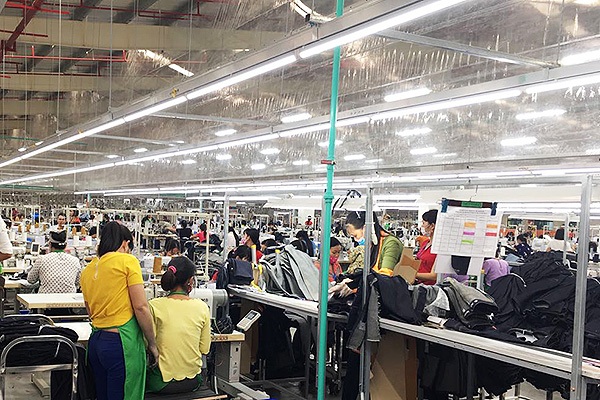
Textile industry is one of the major contributors to the economy of Vietnam, especially textile enterprises that have brought many value to Vietnam through export. In the past few years, despite the global decline in demand, textile enterprises have made accurate forecasts, anticipating the shift in production, and the result is growth of the industry is continuous and strong.

According to statistics of the Vietnam Textile and Apparel Association (VITAS), in 2017, Vietnam’s textile export value reached US $ 31 billion, up more than 10% over 2016. This successful, according to VITAS, the key factor is “increase productivity”. In order to increase labor productivity effectively, textile enterprises choose to automate production, apply lean manufacturing, invest in machinery and equipment, and improve their training and development capacity.
In Industry Revolution 4.0, many experts said that the textile industry will be impacted in a difficult direction. Specifically, robots will be used massively, workers will be fired, lose their jobs, orders will decrease, the investment in machinery will increase costs …
However, due to the specificity of fashion market, the change in design, material … takes place continuously, so, it is very unlikely that fully automated robots can be use in textile industry. For example, automated robots only perform well when performing bulk shipments, with fixed patterns, repeatedly executed. However, with the products that need to be customization, it is indispensable to personalize the skillful hands of the craftsmen. In addition, the investment in automated production lines, robotic systems … requires a lot of investment, resulting in investment activities are not more effective than the use of labor. Therefore, the textile industry is not too pressured with the Industry Revolution 4.0, but the most important issue is to solve the problem of maximizing the automation rate possible, ensuring labor productivity without excess. Depends on the status of “thirsty” human resources today.

For textile enterprises, the application of lean manufacturing has proved feasible and effective. In addition to the tools and methods of lean, the application of automation in production is an effective method that improves the productivity of the machinery system, optimizes labor time of the worker, minimize downtime due to incidents. The automation systems also help businesses collect information about the operation status, time of occurrence of accidents or break time of machinery and workers. This information creates a data warehouse that helps analyze and deliver optimal performance solutions that help business leaders make decisions that increase efficiency and increase productivity in the enterprise.
Industry Revolution 4.0 is in place, however, let apply it in the simplest, closest and most appropriate way to the specificity of the business or the industry. Flexible and practical applications such as textiles are typical examples.